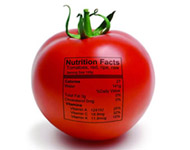Nutrition and Health Sciences, Department of

Department of Nutrition and Health Sciences: Faculty Publications
ORCID IDs
0000-0001-6894-9456
0000-0002-9618-2069
Document Type
Article
Date of this Version
2018
Citation
Nutrients 2018, 10, 1941
Abstract
Acute exercise can induce either a compensatory increase in food intake or a reduction in food intake, which results from appetite suppression in the post-exercise state. The timing of food choice—choosing for immediate or later consumption—has been found to influence the healthfulness of foods consumed. To examine both of these effects, we tested in our study whether the timing of food choice interacts with exposure to exercise to impact food choices such that choices would differ when made prior to or following an exercise bout. Visitors to a university recreational center were equipped with an accelerometer prior to their habitual workout regime, masking the true study purpose. As a reward, participants were presented with a snack for consumption after workout completion. Participants made their snack choice from either an apple or chocolate brownie after being pseudo-randomly assigned to choose prior to (“before”) or following workout completion (“after”). Complete data were available for 256 participants (54.7% male, 22.1 ± 3.1 years, 24.7 ± 3.7 kg/m2) who exercised 65.3 ± 22.5 min/session. When compared with “before,” the choice of an apple decreased (73.7% vs. 54.6%) and the choices of brownie (13.9% vs. 20.2%) or no snack (12.4% vs. 25.2%) increased in the “after” condition (X2 = 26.578, p < 0.001). Our results provide support for both compensatory eating and exercise-induced anorexia. More importantly, our findings suggest that the choice of food for post-exercise consumption can be altered through a simple behavioral intervention.
Included in
Human and Clinical Nutrition Commons, Molecular, Genetic, and Biochemical Nutrition Commons, Other Nutrition Commons


Comments
© 2018 by the authors.
Open access
doi:10.3390/nu10121941